Building software doesn’t have to mean writing endless lines of code from scratch. Groundbreaking news? Not exactly. Whether you’re a developer or a non-technical founder with a big idea, low-code platforms will help you bring your vision to life. But here’s the catch. There are so many options. How do you find the one that fits your needs without wasting time or budget?
In this guide, we’ll share best free low code development platforms, backed by years of hands-on experience, to help you find the perfect platform for your next project. Ready to start? Let’s begin.
12 Best Low Code Development Platforms
In the following sections, you’ll find our favorite low-code platforms, along with their strengths, weaknesses, and the reasons I chose them.
UI Bakery
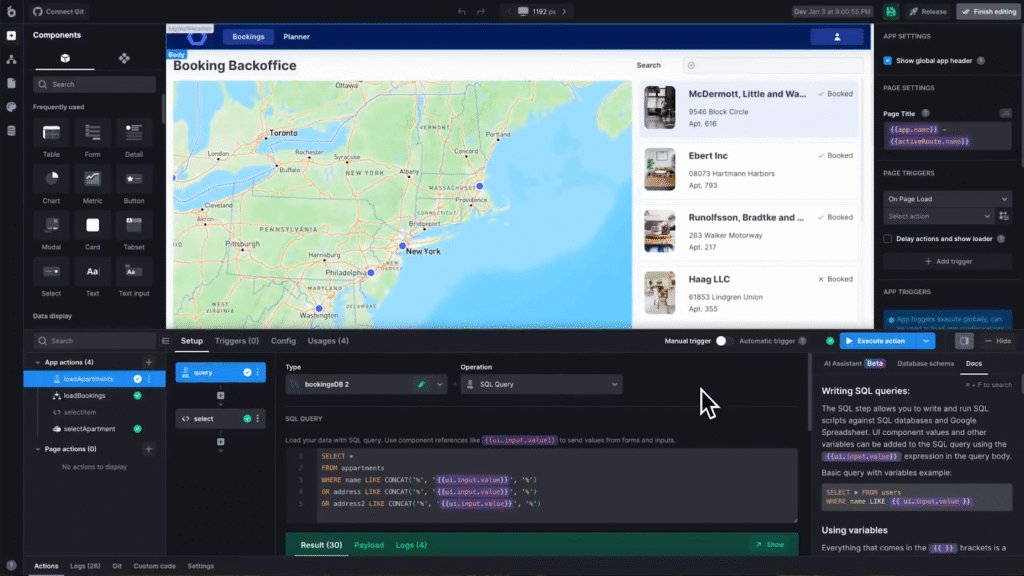
The list is opened by UI Bakery. It is the best low code development platform designed for developers and non-developers to create internal enterprise tools and applications. It builds almost everything – custom dashboards, automate workflows, and manage data efficiently.
It has a drag-and-drop interface that simplifies and accelerates the workflows. With over 75 ready-made components, you can easily assemble applications without any extensive coding knowledge or experience.
Moreover, the platform connects to popular SQL and NoSQL databases and REST/HTTP APIs, enabling a wide range of applications. UI Bakery also supports workflow automation through webhooks and job scheduling, making a perfect option for streamlining the developer’s routines.
Appian
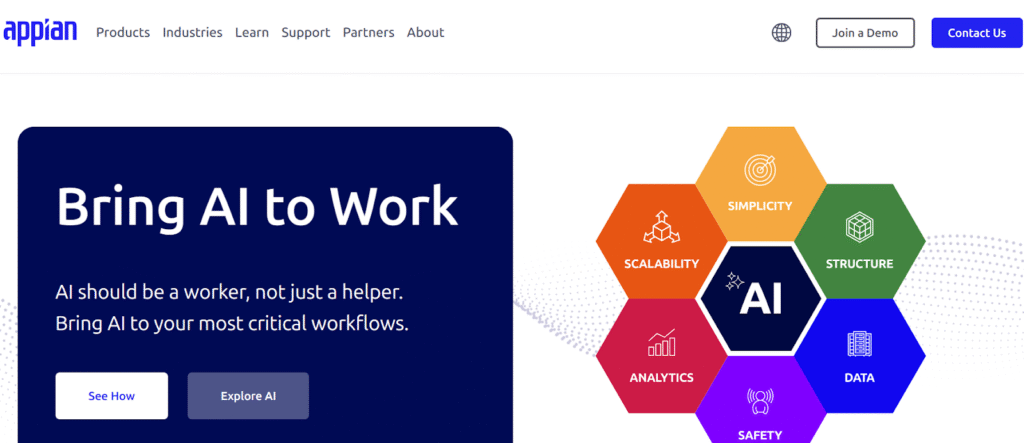
Appian is one of the best low code app development platforms, offering end-to-end process automation. It covers process mining and data fabric, etc. Appian’s case management features stand out. They include the ability to converge data from multiple sources and still get a decent scope of real-time analytics and reports.
Asa result, the automation features also allow you to manage repetitive tasks on a large scale. So if you’re doing case management with several stakeholders, it’s a valuable tool. Moreover, pre-built integrations for SAP, AWS, and Salesforce could be used to connect your own solutions, along with an API.
Appsmith
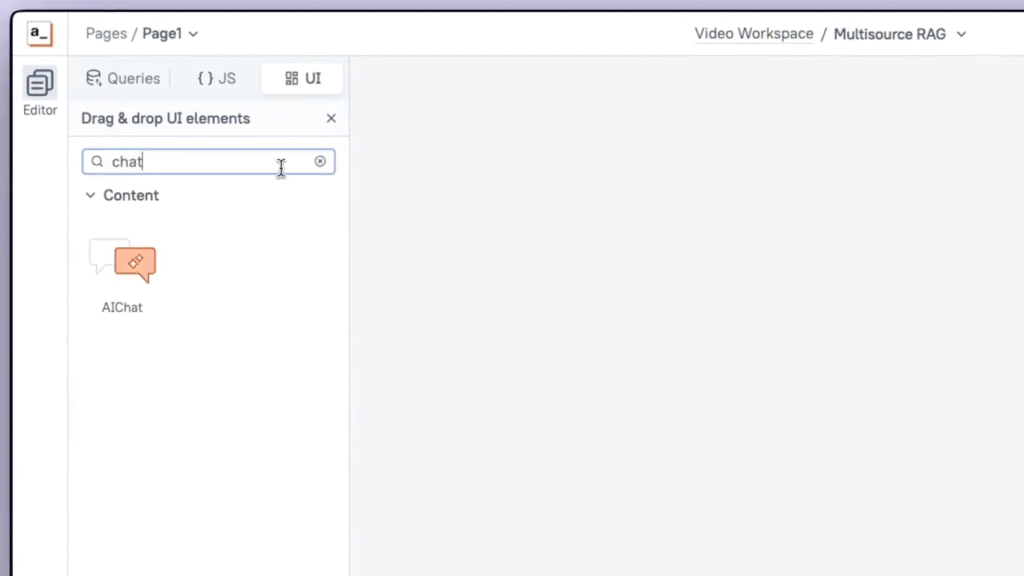
One of the low code development platforms we want to talk about is Appsmith. Appsmith lets users connect to any database, SaaS, or GraphQL/REST API with a pair of clicks. Beong an open-source, low-code development platform, Appsmith helps developers to create web applications using data sources, widgets, queries, JavaScript, and reactive bindings.
With help of Appsmith, you get rapid application development through its architecture and unique features, such as the description of the desired state of a widget using expressions that reference other entities in the application. It also offers features such as drag-and-drop UI building and git-based version control, easing the build, maintaintenance, and deployment.
Xano
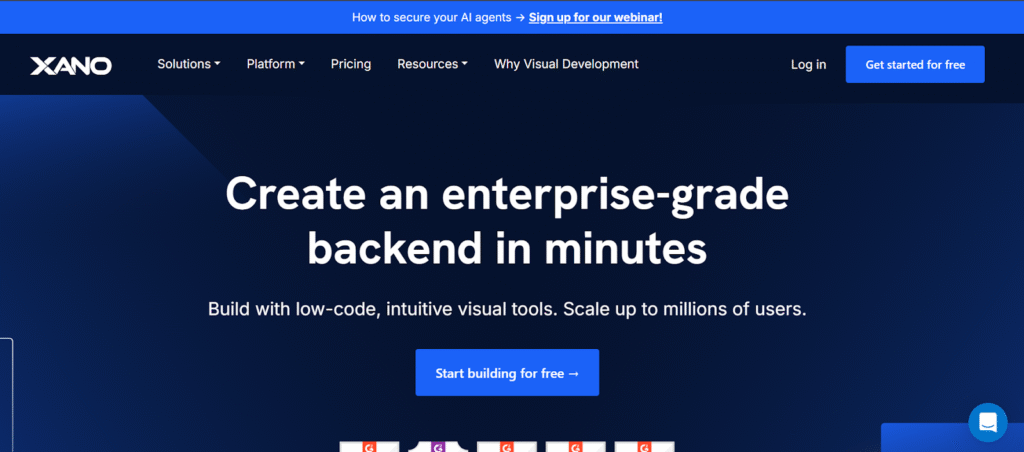
Xano is a low code platform development for back end. It includes a no-code API builder, flexible database options with no record limits, and scalable server infrastructure. The platform’s ability to connect seamlessly with various front-end tools and frameworks, coupled with its extensive automation and workflow capabilities, makes it a powerful choice for building robust applications.
Moreover, Xano’s features involve a database management system for relational and non-relational data, an intuitive visual API builder that simplifies complex API creation, and built-in data transformation tools for real-time data processing and manipulation. Additionally, Xano offers advanced security features, including automated backups and encryption, to ensure data integrity and protection.
Superblocks
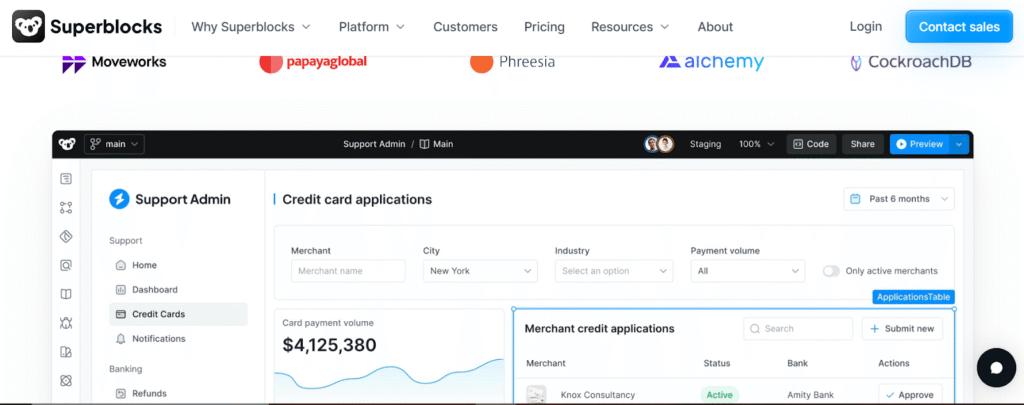
Superblock is low code development platforms, open-source-friendly. Also, it’s best for building secure internal apps with a visual drag-and-drop editor. It’s designed to accelerate modern internal applications development.
Moreover, Superblocks has the ability to accelerate development cycles with drag-and-drop components, extensive integrations with databases and APIs, and Git-based version control. The platform supports a wide range of databases and APIs, including Postgres, MySQL, MongoDB, Snowflake, and Salesforce, among others.
Mendix
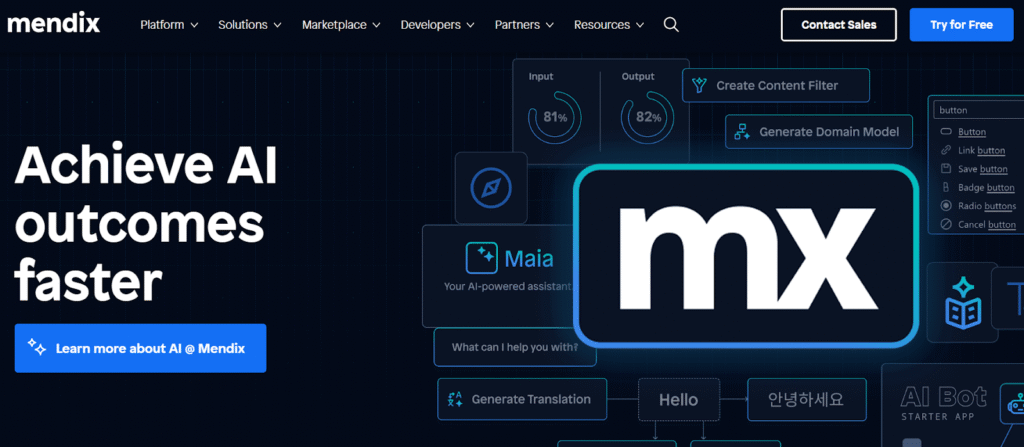
Mendix is a comparatively free low code development platform aimed at businesses. It helps them to provide solutions such as enterprise application development, workflow automation, and modernization for legacy systems.
It supports Agile frameworks as it has a built-in project management tool that allows you to organize Scrum or Kanban teams. Additionally, it comes with customizable workflows, including backlog, refinement, to-do, in-progress, testing, and done sections.
Studio Creatio
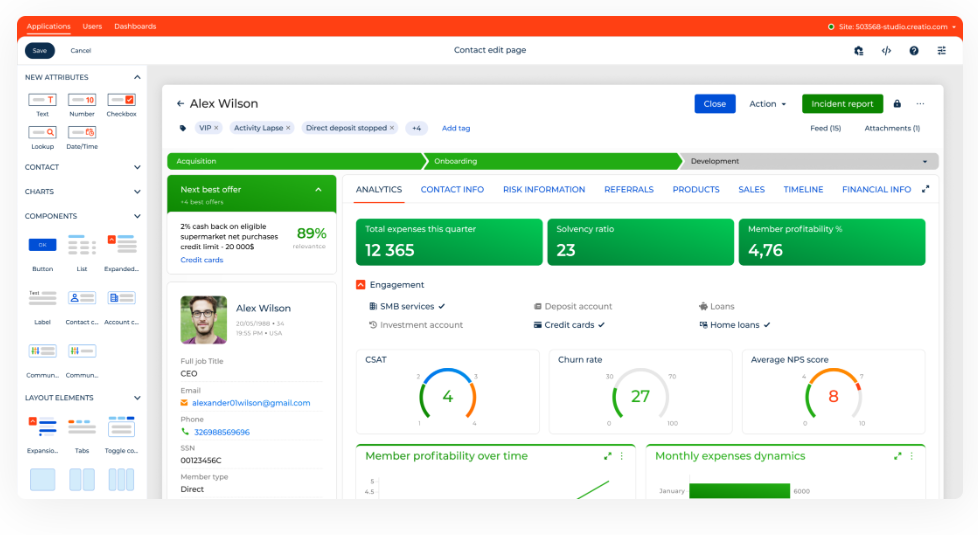
Studio Creatio is a no-code platform that helps users to build applications and automate workflows. It is recognized for its user-friendly interface and robust design tools as a low code development platforms gartner.
The has a no-code designer to create and modify different views, pages, data models, and workflows, all within a centralized workspace. Additionally, it operates on a drag-and-drop functionality, perfect for those with little coding knowledge. Moreover, its visual modeling tools, integration capabilities, and a scalable architecture make it an affordable but invaluable tool.
Nintex
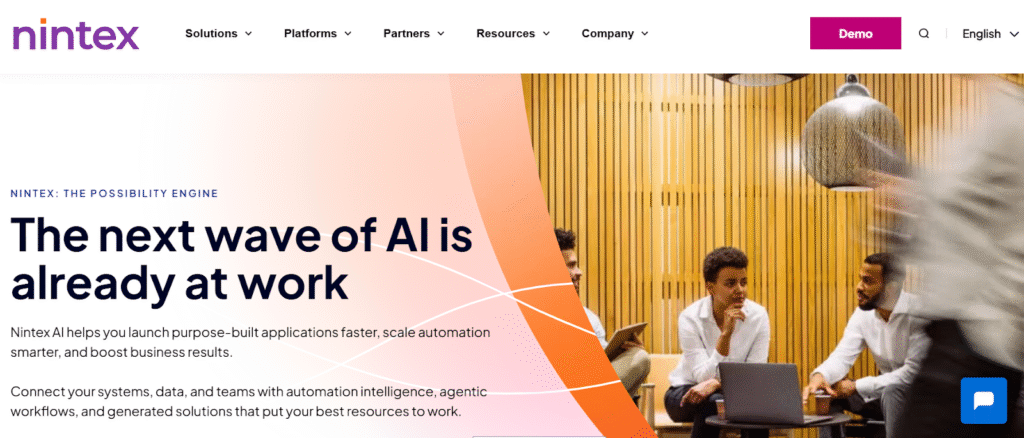
Nintex offers low-code process automation tools using a drag-and-drop builder and pre-built templates. Its process automation features, available in the Nintex Automation Cloud platform, proved useful for managing complex workflows. It was comprehensive, covering processes across communication, records, and content systems at scale.
Features that we kept going back to for workflow management include the integrated process mapping function that laid out all my existing workflows and allowed us to make changes with the full scope in front of us.
Caspio
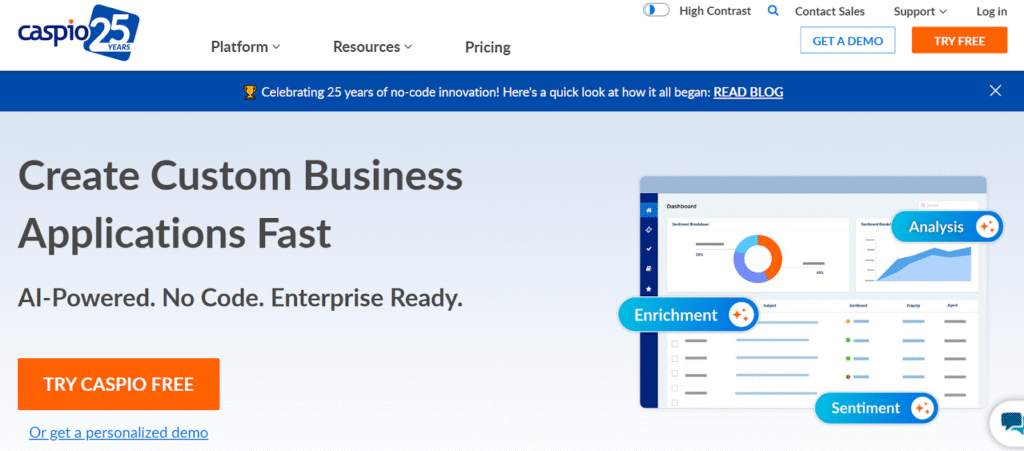
Caspio is a low-code development platform whose primary focus is on database applications for businesses. But it’s peculiarity is that the company has placed a premium customer support. The company has several customer service lines, including local numbers for its biggest markets: the Americas, Asia-Pacific, and Europe. If you don’t feel confident when working with low-code platforms, the assistance might just be worth the asking price.
But above that Caspio shares features that made us feel totally comfortable via onboarding, consistent feedback, and a training program. You also get access to project consultation sessions where experts can help you flesh out your ideas before getting started, including writing a full proposal for your project.
WaveMaker
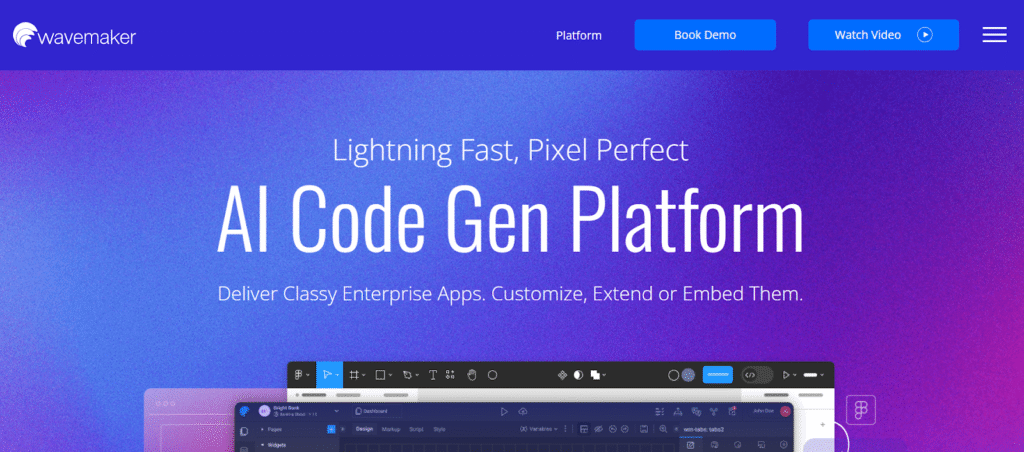
Wavemaker is king among low code mobile development platforms. We chose Wavemaker because of its Application Platform as a Service (aPaaS) features, specifically how many tools it gave us to manage deployments both off and on-premises. Whenever we deployed an app, it automatically provisioned the environment with dependencies, databases, and several other services we needed to keep it running.
Moreover, Wavemaker’s features include the system-wide cloud-native design, ensuring that deployments were more likely to retain ideal levels of fault tolerance, scalability, resilience, and availability.
How to Choose a Low-Code Platform
With so many low-code development platforms, deciding the best fit for your needs can be challenging. As you’re shortlisting, trialing, and selecting a low-code platform, consider the following:
- What problem are you trying to solve – Determine the first-priority goal. This will help to focus on the essential features and functionalities of the low-code platform.
- Who will need to use it – Knowing who will use the platform will help you make decisions about anything from the complexity of the training needed to the quantity of licenses needed.
- What other tools does it need to work with – Consider your current arsenal. Make it clear which tools will remain and which will be replaced. Choose whether to combine the tools or think about using a single low-code platform in place of several tools.
- What outcomes are important – Think about the outcome that the platform must produce. Establish specific objectives, whether they are to increase delivery speed, reduce expenses, or enhance customer experience. Consider your definition of success and the metrics you will use to gauge it. If you’re not considering the results, you can be wasting a lot of precious time comparing low-code platform features until you’re exhausted.
- How it would work within your organization – Think about the low-code platform choice in conjunction with your current procedures and techniques. Test the things that are functioning well and the problematic regions. Keep in mind that every business is unique. Please don’t assume that just because a platform is well-liked, it will be effective in your company.
Trends in Low-Code Platforms
The low-code platform market is changing in 2025. Developers and businesses are pushing the limits of what can be accomplished with little coding. This increase is being driven by the desire to expedite digital transformation, streamline development, and enable non-technical users to create sophisticated solutions. After looking over recent product upgrades, press announcements, and release logs, I discovered some well-liked low-code platform trends.
Combining machine learning and artificial intelligence: Many low-code and no-code app builders are adding AI features. These automate intricate aspects of app development, such as predictive analytics and code composition. This trend reflects the increasing demand for apps that integrate intelligent decision-making.
Integration with Blockchain: Using blockchain enables users to create apps in a low-code environment with improved security and data integrity.
Tools for Real-time Collaboration: Real-time collaboration amongst remote teams illustrates how technologies supporting distributed workforce models are still needed.
Knowing the obvious patterns in today’s low-code platforms is not only advantageous but also essential. These platforms aim to increase the speed, accessibility, and integration of cutting-edge technology with app development. You can select a platform that suits your present requirements and gets you ready for the future with the help of this expertise. It also acts as a guide for purchasing equipment that will provide you with a competitive advantage.
What Are Low Code Development Platforms?
Instead of inputting code, you can create software via a low-code platform. Just click and drag components around. Like the Lego set. Moreover, you get tools for managing data, creating workflows, and developing layouts. They also make it possible to link apps to other services without writing complicated code.
For developers with little time or those who are new to coding, low-code platforms are a boon to anyone who wants to launch an app fast. These platforms enable businesses to implement ideas with no technical hassle, from enhancing inventory management to introducing a consumer survey tool.
Features of Low-Code Platforms
A wide range of programming jobs has become manageable thanks to low-code platforms. For everyone, even without a solid background codi ng knowledge, they simplify the development process. That’s why you need a robust platform tailored to your needs and wants. When selecting it, keep the following in mind:
- Drag and Drop App Building: This feature lets you design and build an application without writing much code.
- Visual Modeling Tools: Workflow visuals and data models help you better understand and design the application.
- Templates: You can build applications faster using tested and proven pre-built elements.
- Cross-Platform Compatibility: This ensures your applications work across different devices and operating systems.
- Integration Capabilities: Connectivity allows your applications to integrate with existing and third-party systems.
- Scalability: Scalable platforms can handle increasing workloads and user numbers without performance losses.
- Security Features: Robust security protocols protect your applications from unauthorized access and data breaches.
- Automated Testing Tools: Automated testing keeps your apps bug-free and running smoothly.
- Reporting and Analytics: Analytics tools help you track user interactions and system performance to improve decision-making.
- Rapid Prototyping: Creating prototypes speeds up refinement and helps you better meet user needs.
In the end, a top-notch low-code platform encourages innovation by enabling people to create excellent applications with minimal code.
Benefits of Low-Code Platforms
In our opinion, low-code platforms are game-changers in software development. They make coding accessible and streamline the process of creating complex applications. Here are five primary advantages that low-code platforms bring to your users and organization:
- Accelerated Development Time: Low-code platforms reduce the time required to build applications. This speed enables you to better respond to market changes and internal demands.
- Reduced Costs Lower Development Costs: Low-code platforms minimize the need for extensive coding, reducing developers’ hours on each project. This efficiency reduces labor costs and moves resources to other critical areas of development.
- Empowers Business Users: These platforms have user-friendly interfaces that allow non-techies to code. This democratization empowers your employees to innovate more and solve business problems.
- Enhanced Flexibility: Low-code platforms provide tools for updating and scaling applications easily as business needs evolve. This flexibility ensures that software can grow with the company.
- Improved IT and Business Collaboration: Low-code platforms simplify the development process, allowing closer collaboration between IT and business units. This collaboration produces outcomes that align more closely with business needs.
Cost & Pricing for Low-Code Platforms
Below is a summary of common plan kinds, their regular costs, and the features that each one offers. Even if you have little to no experience purchasing low-code platforms, this information will still be helpful.
| Plan Type | Avg. Price | Features |
| Free | $0 | Basic tools, limited deployment |
| Basic | $10-25/user/month | Core features, standard support |
| Professional | $50-100/user/month | Advanced features, integrations, premium support |
| Enterprise | $250+/user/month | Unlimited apps, security, full support, customizations |
Selecting the best plan includes weighing the features your project needs against the costs. Think about how each plan’s support, integration, and scalability fit your present requirements and anticipated future growth.
Final Thoughts
Considering that low-code is expected to increase by 18.9%, an excellent opportunity to implement the technology is now. However, not any lo code platform will be the same as efficient. Your low-code platform should be tailored to your objectives and the resources.
Consider the skill levels of your team. Many apps created without code still rely on backend functionality, even when no-code platforms make frontend design simpler. In these situations, developers frequently add specialized MBaaS software to no-code platforms in order to handle databases, authentication, and backend functionality. This gives you the ability to develop solutions that meet the particular needs of your company.